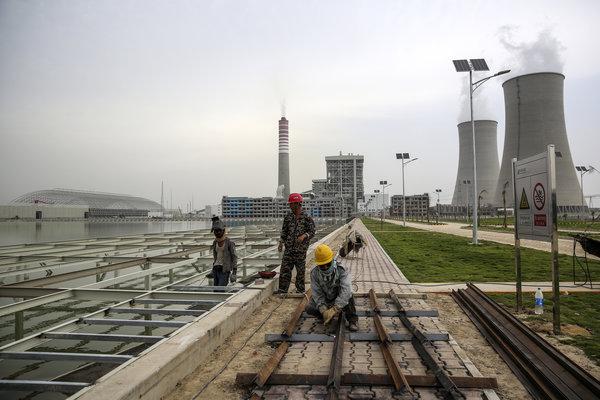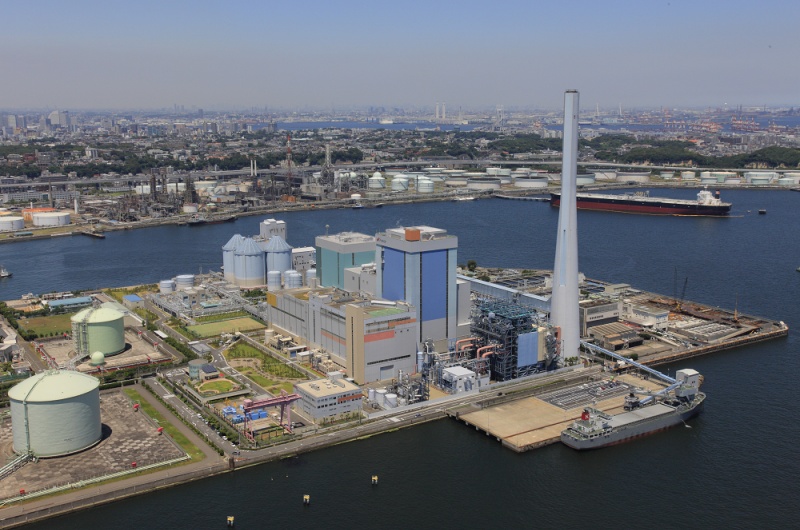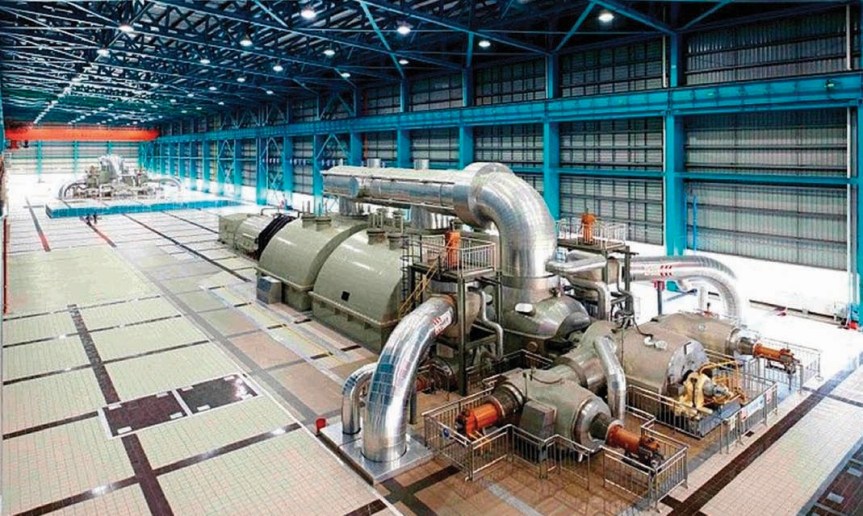One hackneyed myth propounded by RE zealots is that China is well on its way to an all wind and sun powered future. The reality differs.
Instead of worshipping nature’s wonder fuels, China is flat out building hundreds of high-efficiency, low-emissions coal-fired plant, in a concerted effort to drag itself out of the grinding agrarian poverty which, not so long ago, gripped the country fast.
If costly and chaotic wind and solar were ever in favour in the People’s Republic, they’ve clearly fallen out of favour now.
Where Mao and his Red Army drove the Communist revolution, it’s coal-fired power that’s driving China today, and for generations to come.
China secretly building hundreds of new coal plants, new report claims
The Australian
Graham Lloyd
27 September 2018
China is building hundreds of new coal-fired power plants with a capacity equal to five times Australia’s entire electricity market despite assurances from central government that construction had been stopped.
A report by environment group CoalSwarm used satellite images to prove construction was well underway on plants with a total capacity of 259 GW.
This compares with Australia’s total electricity capacity from all sources of 50 GW and was enough to lift China’s coal-fired power production by 25 per cent and overshoot the country’s own announced 1100 GW cap.
CoalSwarm said commissioning of the coal plants would leave China with 1010 GW of operating coal capacity in 2045, the year it should have phased out coal to meet its Paris climate goals.
“While China’s central authorities have sought to mitigate the surge through a series of special regulatory measures, new satellite imagery and plant-by-plant research show the measures to have been only partially effective,” the report said.
“Rather than cancelling unneeded coal plants, China’s officials in many cases have merely rescheduled them,” it said.
China is responsible for 48 per cent of global coal-fired power production.
The new capacity was the result of a permitting surge from late 2014 to early 2016, after regulations were handed from central to provincial authorities.
In 2016 and 2017, central authorities sought to rein in the surge through a series of suspension orders.
However, many of the restrictions only delayed new projects rather than stopping them.
The CoalSwarm report said overall, 126 GW of coal capacity were in active construction, 57 GW were currently frozen in mid-construction, and 76 GW were in unrestricted pre-construction development.
“Once completed, the pipeline of 259 GW will increase China’s current operating capacity of 993 GW by 25 per cent, an amount comparable to the current operating coal power capacity of the United States (266 GW),” the CoalSwarm report said.
During the peak of the boom, the decade from 2006 through 2015, China added 618 GW of new coal power capacity or “one coal plant per week”.
CoalSwarm said China’s authorities had shown little appetite for cancelling plants that had entered construction.
“Instead, they appear to be aiming to preserve the 1100 GW cap on coal-power capacity through administrative sleight of hand: i.e. simply holding back on official start-up of many completed plants until after the end of the country’s current Five-Year Economic Plan (2016—2020),” the report said.
For 2018, authorities had listed by name the coal-fired units that can go online in the current calendar year, totalling 21 GW of capacity.
An additional 11 GW of projects were seeking authorisation to go online, and it was not yet clear how much completed capacity would be authorised for operation in 2018, and how much would be postponed to a later date.
“Presumably limits on total operating capacity could also be imposed in 2019 and 2020, and be designed to keep the operating coal fleet technically under the 1100 GW cap,” CoalSwarm said.
“But such limits do not actually address the overcapacity problem, which can only be solved by cancelling capacity outright, not by rescheduling it,” the report said.
CoalSwarm said any solution based on shifting start dates would be illusionary because it would simply create a growing reservoir of fully completed plants that were ready to begin operating after the end of 2020, as soon as they received authorisation from the central government.
The Australian

CoalSwarm is obviously keen to paint China’s efforts to build an economic future for its people as something entirely sinister, with its claim that hundreds of coal-fired power plants are being built in “secret”. As if thousands of tonnes of reinforced concrete are being poured across China, in plain view of hundreds of millions of Chinese, without a single one of them noticing! [Note to Ed: how do you hide hundreds of enormous construction projects from 1.3 billion people?]. Talk about a ‘beat up’.
What really incenses the likes of CoalSwarm, and other eco-zealots of their ilk, is that the inscrutable and pragmatic Chinese haven’t been sucked in by the nonsense that’s overrun plenty of Western economies. This is a country that needs reliable and affordable power, it needs mountains of it and it needs now.
And it’s also a bit rich for CoalSwarm to present its purported exposé as if it were current news, especially given that the same crowd ‘exposed’ the rapid expansion of coal-fired power in China, Japan and across South-East Asia over six months ago.
Here’s the Global Warming Policy Foundation’s report on CoalSwarm’s much earlier feat of cloak and dagger espionage.
New Coal War: China and Japan Compete for Hundreds of New Coal Plants in Southeast Asia
Global Warming Policy Foundation
Frederick Kuo,
1 April 2018
Southeast Asia’s appetite for coal has spurred a new geopolitical rivalry between China and Japan as the two countries race to provide high-efficiency, low-emission technology. More than 1,600 coal plants are scheduled to be built by Chinese corporations in over 62 countries. It will make China the world’s primary provider of high-efficiency, low-emission technology.
A joint report by Greenpeace, the Sierra Club and CoalSwarm indicates that Southeast Asia will be the new epicentre of coal production. Asia accounts for 85 per cent of new coal power development in the world’s top 20 coal producing countries, with China as the leader of the pack. However, while tighter restrictions on domestic coal plants have been imposed by the central government to curb pollution, Beijing has pushed the development of high-efficiency, low-emission coal plants across Southeast Asia as part of the “Belt and Road Initiative”.
As China is expanding its influence, Beijing’s foremost strategic competitor in Asia, Japan, is being forced to step up efforts to combat its shrinking influence in the region. The booming energy sector of Southeast Asia, especially coal, is proving to be the new front line in the geopolitical rivalry between Asia’s two industrial giants.
China’s coal drive is part of a larger energy-driven investment policy that follows its attempt to reduce carbon emissions by clamping down on the coal industry and pledging to increase investments in renewables. However, Chinese energy planners have realised they cannot relinquish coal as a major power source for the foreseeable future. The country remains highly dependent on coal, with coal sources accounting for roughly 73 per cent of China’s electricity production in 2014, according to World Bank numbers. Instead of abandoning coal, China is developing cleaner and higher-efficiency coal plants – and, as a boon to its plan for greater regional influence, aims to export the technology abroad.
China is developing cleaner and higher-efficiency coal plants – and, as a boon to its plan for greater regional influence, aims to export the technology abroad. To that end, the China Development Bank and China Export Import Bank last year lent US$25.6 billion (HK$200.92 billion) to global energy projects. This figure surpassed even the US$22.6 billion provided by the International Bank for Reconstruction and Development.
From a market perspective, Beijing’s plan to become the world’s primary high-efficiency, low-emission technology provider comes at the right time. Coal consumption across Asia is slated to outpace that of China over the next 20 years, coupled with an absolute increase in global coal demand over the next seven years. The more than 1,600 coal plants scheduled to be built by Chinese corporations in over 62 countries will make China the world’s primary provider of high-efficiency, low-emission technology.
Because policymakers still regard coal as more affordable than renewables, Southeast Asia’s industrialisation continues to consume large amounts of it. To lift 630 million people out of poverty, advanced coal technologies are considered vital for the region’s continued development while allowing for a reduction in carbon emissions.
Clearly, the countries providing this technology will inevitably expand their sway with regional governments. As a consequence, a race between Tokyo and Beijing over the construction of coal plants is already under way.
China is currently in the lead, having overtaken Japan in 2000 as Asia’s leading exporter of coal industry equipment. It remains the largest technology supplier to India and the second-largest investor in coal projects in Vietnam, behind Japan. It is also constructing Bangladesh’s first clean coal plant. These developments reflect Beijing’s advantage in providing the necessary coal funding. China has been “greening” for years, developing renewables and carbon capture technologies at breakneck speed, while also investing more aggressively in the region than Japan at a time when most multinational banks have restricted coal funding. The results speak for themselves. Between January 2010 and March 2017, the Japan Bank for International Cooperation was involved in five financing deals while Export-Import Bank of China inked seven.
But Japan is not exactly twiddling its thumbs, either. Since the 2011 Fukushima disaster, Tokyo has ramped up coal use and has raced ahead in clean coal technology development. Japan now boasts the world’s most efficient coal-fired plant, which uses less coal to produce more electricity. Seizing on this competitive advantage, Japanese Prime Minister Shinzo Abe has tried to capitalise on these capabilities in a bid to increase Japan’s reach across Southeast Asia – and in China’s backyard. Through the Japan-led Asian Development Bank, Tokyo has pledged US$6.1 billion for projects throughout the Mekong as well as for various other projects from Vietnam to Myanmar, providing an alternative to China’s regional designs.
What’s more, Japan will soon receive a boost from the Trump administration through the Japan-United States Strategic Energy Partnership. The partnership could be a game-changer in terms of Sino-Japanese energy competition, with a joint commitment by Tokyo and Washington to promote high-efficiency, low-emission deployment throughout South and Southeast Asia. With the Trans-Pacific Partnership in the doldrums, the new partnership is designed to counter Beijing’s energy diplomacy through a more coherent bilateral push.
This may well be only the beginning. US Energy Secretary Rick Perry has repeatedly emphasised that coal will be a key part of the Trump administration’s policies.
Global Warming Policy Foundation

& it’s the cleanest and most efficient in the world.


Since the first coal shipment from Hay Point, south of Mackay Queensland, in 1971 more than 1,000,000,000 (1 billion) tonnes of clean coal have been exported from Hay Point and nearby Dalrymple Bay to developing coutries including China and India. In November 2018 there were 5 ships being loaded and 67 others anchored awaiting loading at either Dalrymple Bay or Hay Point.
Since 1971 Australia has contributed enormously to lifting China’s and India’s standard of living and will continue to do so for many years.
Reblogged this on "Mothers Against Wind Turbines™" Phoenix Rising….
We sell both Japan and China our excellent coal for a low price, in return we buy obsolete renewable generation technology off China, then pay them billions in subsidies to have their rubbish. Whilst we are blindly told we are polluting the planet with same coal overseas countries are using? Go figure?
You know it makes sense…
Reblogged this on UPPER SONACHAN WIND FARM.